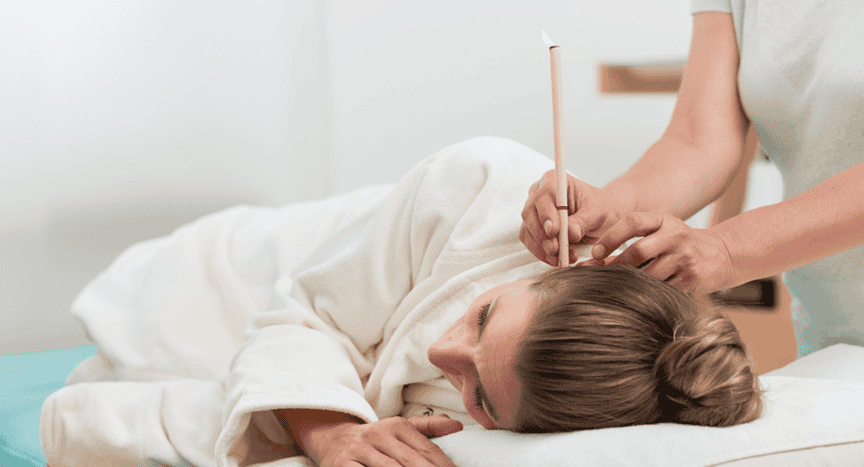You might have heard about ear candling and seen videos of how it is used to remove ear wax. Ear candling is an alternative therapy believed to remove earwax and enhance hearing. Regardless of how much people use this therapy, several misconceptions surround the practice. Let’s discuss some of these myths and potential risks, and emphasize the importance of proper ear care.
That Ear Candling Removes Earwax
Many individuals believe that ear candling removes earwax, and the belief stems from the fact that a lit candle produces heat and creates a vacuum that pulls out the wax from the ear. However, studies showed that ear candling does not remove earwax. This procedure will push the wax further into your ear canal and cause more issues.
Your Hearing Will Be Improved
For those who think ear candling will improve their hearing, we’re here to tell you that it is false. The belief is that ear candling removes earwax and improves hearing clarity. Excess earwax can indeed lead to hearing loss, but ear candling is not the solution to this problem. Ear candling will block your ear canal and lead to other complications. If you experience hearing loss, please schedule a hearing health exam with a hearing health professional to find out the cause and get proper treatment.
That Ear Candling is Safe for Everyone
When thinking about ear care, your safety should come first. Several people claim that ear candling is safe and natural for cleaning the ears, but in truth, it poses some serious risks. Using candles on your ears can cause burns and if the hot wax drips into your ears, you can be injured. Using an open flame near your face and hair can lead to a fire outbreak, so medical professionals strongly advise that you stay away from ear candling.
Ear Infections Can Be Cured
This is another myth that people believe to be true. There is no scientific proof that ear candling helps treat infections and reduce inflammation. Since the claim cannot be supported, we advise that you desist from ear candling. To treat any ear infection, you need proper medical treatment like antibiotics, which must be prescribed by a healthcare professional. If you rely on ear candling to treat ear infections, you’re delaying appropriate care and worsening your condition.
The Practice is Ancient, So It Should Be Trusted
A lot of folks who support ear candling believe it’s a time-honored tradition with roots stretching back through history. They say that different cultures have been using ear candling for hundreds of years. While it’s true that some ancient societies did practice ear candling, there’s not much proof that it was widely used in the past. What we call ear candling today is a pretty recent invention. So, it’s important to sift through historical facts and marketing myths when thinking about health practices.
It is Effective for Everyone
Those who preach ear candling to people often say that it is a good practice and doesn’t discriminate against age or ear condition. This is not accurate. Ear candling works differently for people, and it’s not safe for everyone. Individuals with ear conditions like ear tubes, ear infections, or perforated eardrums are advised to steer clear of ear candling. We advise you to consult a healthcare provider for the best approach to avoiding potential harm or issues and caring for your ears.
Why is Proper Ear Care Important?
If you’re well-equipped with the realities and myths of ear candling, you’ll understand the need for proper ear care. Note that earwax is natural and it protects your ear canal from dust, infections, and dirt. Most times, the ears self-clean and the earwax moves to the ear opening, where it can be wiped away.
Those experiencing symptoms of ear pain, hearing loss, or feeling fullness in the ears should seek professional help. You can contact us for a hearing health exam. The exam will determine the issue and the best treatment will be recommended. Please, do well to avoid unproven and potentially harmful ways of ear care like ear candling.
Taking proper care of your ear means going for regular checkups with your hearing healthcare provider, protecting your ear from noisy environments, and following the safest methods for ear cleaning. However, if you need to remove earwax, employ safe alternatives like ear drops or professional ear cleaning services.

